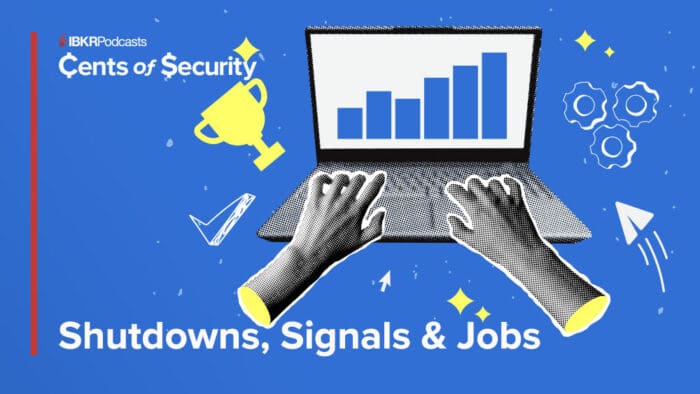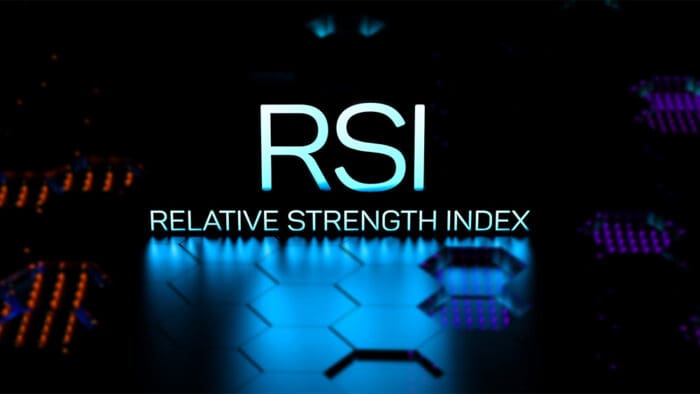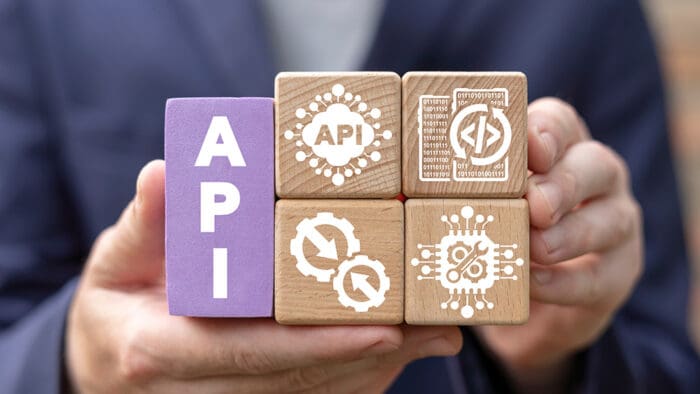In this episode, Yujun Lin of Interactive Brokers Singapore sits down with Ivan Han of SGX to explore why India’s markets are turning heads worldwide. From GIFT Nifty futures to rupee‑hedging strategies, discover whether India could be your portfolio’s next big play.
Summary – IBKR Podcasts Ep. 281
The following is a summary of a live audio recording and may contain errors in spelling or grammar. Although IBKR has edited for clarity no material changes have been made.
Yujun Lin
Hello everyone. My name is Yujun. I am the CEO of Interactive Brokers Singapore, and with me today is our special guest, the Deputy Chief Risk Officer of the Singapore Exchange, or SGX. He’s here to talk to us about a very interesting topic to many investors and our clients these days, which is India.
Ivan, so I think we can begin very quickly. Past the half-year mark, how do you see the Indian economy doing in terms of growth and inflation?
Ivan Han
Yujun, thank you very much firstly for having me on the show today. India’s a really exciting economy, I think, not just to investors but for the SGX as well. When you look at India from an economic perspective, I think they continue to remain one of the fastest-growing major economies globally for this year.
If you look at GDP growth projections, they are probably still in the range of about, I would say, 5% to 6% — slightly down from last year. But if you compare it to most major economies, including the US, EU, and China, this is still a very robust figure.
What’s driving this growth? I think the domestic growth story remains very strong. If you look at the macro fundamentals, they’ve got strong domestic consumption. Capital expenditure from corporates remains strong on the governments. And you do see the government continuing to invest in infrastructure spending.
At the same time, they’re also looking to attract foreign investments with tax reforms and incentives as well. And then, a bit closer to our ballpark — you talk about the stock market — that’s really where I would say, if you look at the Indian stock market, it’s been a story of resilience in the past year, especially when you look at the external environment that we operate in today with high levels of macroeconomic uncertainty.
You’ve got geopolitical tensions thrown into the mix, and not to mention the constant tariff actions that we’ve been seeing over the last few months. And I think that’s really boosted the activity that you see in the Indian stock market.
So they’ve got really strong domestic liquidity. Retail investor participation remains strong. I’m sure you’re aware, the regulators have taken steps to rein in some of the speculative type of activity that you’re seeing in the local markets, with a view to increasing retail investor protection.
That said, I think it continues to remain strong. So that hasn’t dampened activity as much. And I think generally you do see that, from a market perspective, there remains general optimism. The stock markets and that performance have shown — whether you look at individual stock counters or across the board from an index or sectoral perspective — I think that’s where you do see India continuing to be one of the outperformers in capital markets globally today.
Yujun Lin
Yeah, thanks for that. That is certainly very interesting to compare where we are today versus just four or five months ago at the beginning of the year, given the amount of noise and uncertainty the US tariffs have generated. To your point, I think India escaped the worst of it, and a lot of our clients are saying that it is a good diversification away from China and the uncertainty in the rest of the world.
To me, India has remained a bastion of stable growth like you had mentioned. But from an SGX perspective, what have you seen in terms of institutional position-taking or cutting and hedging from the activity in NIFTY futures — which is the Indian stock market benchmark — single stock futures, and also from an FX perspective, the Rupee-Dollar futures that you have?
Ivan Han
I think the broad observation across the India shelf that we have, I would characterize it as having seen a flurry of activity over the past few months. Generally, you’ve seen the market swinging from a risk-off sentiment in April when Liberation Day hit, to one of cautious optimism since May, especially with 90-day reprieves coming in.
And if you look at India — why it stands out specifically — it has been, with all the trade tensions going on, quite, I would say, isolated from a lot of the concerns over there. And I see a large part of that coming from political moves that they’ve made, where I would say India has been active in engaging the US administration in trying to negotiate on trade deals.
So I think that has helped swing investor sentiments there. And then accordingly, when we look at our market from an institutional activity perspective across that India shelf, I think what we see — let’s say for the NIFTY futures — the open interest, while there was temporarily a dip in April following the Liberation Day announcements, that was certainly risk-off at work. But since then, that open interest has recovered and in fact has increased — which suggests to us the institutional participation remains strong on both hedging as well as risk-taking activity.
In fact, in April there was a month of record volumes that we’ve seen in the G NIFTY futures. While you look at macro uncertainty and the trade tensions — where they remain high — that’s also driving demand for hedging and opportunistic risk-taking at the same time.
And then you broaden that to look at the single stocks that we have as well on the SGX — that has also in tandem seen a notable growth in activity. I think as a suite, it trades about more than 200 million dollars per day in notional terms. Open interest has also consistently held up above 1 billion during the past few months.
And I think, from where we see participants using these contracts, it’s really for event-driven type of hedging activity around company earnings announcements, and in some ways, looking at sectoral type of rotation plays as well. So that kind of comes in with the use of such single stock derivatives.
And FX is interesting, because through this period I think you really see FX markets having a fair bit of volatility compared to the past. Of course, the dollar’s been weakening, and accordingly, EM market currencies have generally been outperforming.
For our rupee contract, I think volumes have seen tremendous growth in the past year. Our volumes are up close to 40% year-on-year. So we see the institutions actively using the INR futures to hedge the currency risk associated with exposures to equity or even debt markets as well.
And overall, it’s really risk management driving these activities — with volatility in the currencies coming from whether it’s driven by oil prices or interest rate policies. These have become crucial tools for risk management.
So I think just looking at the entire suite, from an institution’s perspective, there certainly has been a rise in hedging activity across all the Indian instruments that we have. And that’s in part reflecting both a cautious as well as a, I would say, risk-aware institutional stance that they’re taking in 2025 — just given all the different geopolitical and macroeconomic factors in play at this time.
Yujun Lin
Yeah. Okay. Thanks for that. Absolutely. So I wouldn’t push you to say that institutions are bullish, but there certainly is a lot of trading interest around India. This is the same that we hear from our clients. Everybody wants access — which happily, we provide.
Some of it is fairly straightforward through SGX, which is your Indian single-stock futures — which I suppose have all the big names in India — and also the Rupee-Dollar futures.
But coming to the NIFTY futures now — we had just recently started offering this, and it’s done tremendously well. I think we see quite a lot of activity going through. But just for the broader audience out there, would you explain what is the GIFT NIFTY Future?
We’re offering that through the SGX-NSE link. And maybe give us a little bit of what the features and benefits are?
Ivan Han
So I think, first of all, we are really excited and pleased that IBKR is connected to the GIFT Connect platform that we have and offering the suite of products there to your customers.
Really, the SGX-NSE GIFT Connect, as we call the platform, is a first-of-its-kind landmark collaboration between the SGX and the NSE to provide access to a unified liquidity pool for trading of Indian derivative products in GIFT City, which is India’s International Financial Services Center located in Gujarat.
This became fully operational in July 2023, and it’s since become, I would say, a key gateway for global investors looking to access Indian equity derivatives. So this is a first-of-its-kind financial corridor that we have between Singapore and India.
Where investors come to use the GIFT Connect is really to have the ability to trade dollar-denominated derivative products that are listed for trading in GIFT City — and with the benefit of clearing and settlement being handled by the SGX in Singapore for customers that are coming through the clearing members of the SGX.
This gives them seamless access to trade Indian equity products on top of all the existing SGX products that they trade across the multi-asset suite of products that we have across equities, commodities, and FX.
The other advantage of doing so is not just having the familiarity of a market infrastructure and rules and regulations here in Singapore that they are already familiar with and accustomed to — but, importantly, from a capital efficiency standpoint, the ability to trade both Indian equity derivative products together with SGX’s shelf of multi-asset products lends them the opportunity to get portfolio and margin efficiencies when they trade multiple products through this platform.
So I think this is unique — first of its kind — and we are looking to broaden the access to more customers through trading members like yourselves into trading of these Indian equity products on the GIFT City Connect.
Yujun Lin
We’re very pleased to offer, with the SGX, access to Indian assets through the GIFT NIFTY futures. And it’s basically a seamless experience — same as trading any other SGX future — and with it comes all the benefits of trading SGX, which is margin efficiency, U.S. dollar denomination, and access to assets that you may not necessarily be able to access elsewhere.
So I think that’s all we have time for today. Thank you very much for your time, Ivan.
Disclosure: Interactive Brokers
The analysis in this material is provided for information only and is not and should not be construed as an offer to sell or the solicitation of an offer to buy any security. To the extent that this material discusses general market activity, industry or sector trends or other broad-based economic or political conditions, it should not be construed as research or investment advice. To the extent that it includes references to specific securities, commodities, currencies, or other instruments, those references do not constitute a recommendation by IBKR to buy, sell or hold such investments. This material does not and is not intended to take into account the particular financial conditions, investment objectives or requirements of individual customers. Before acting on this material, you should consider whether it is suitable for your particular circumstances and, as necessary, seek professional advice.
The views and opinions expressed herein are those of the author and do not necessarily reflect the views of Interactive Brokers, its affiliates, or its employees.
Disclosure: Futures Trading
Futures are not suitable for all investors. The amount you may lose may be greater than your initial investment. Before trading futures, please read the CFTC Risk Disclosure. A copy and additional information are available at ibkr.com.
Disclosure: Forex
There is a substantial risk of loss in foreign exchange trading. The settlement date of foreign exchange trades can vary due to time zone differences and bank holidays. When trading across foreign exchange markets, this may necessitate borrowing funds to settle foreign exchange trades. The interest rate on borrowed funds must be considered when computing the cost of trades across multiple markets.
















Join The Conversation
For specific platform feedback and suggestions, please submit it directly to our team using these instructions.
If you have an account-specific question or concern, please reach out to Client Services.
We encourage you to look through our FAQs before posting. Your question may already be covered!